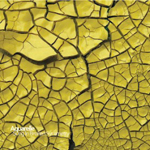|
|
 |
Dusted Reviews
Artist: Aquarelle Album: Sung in Broken Symmetry Label: Students of Decay Review date: Oct. 21, 2011 |

|
|
|
 |
Blame Fennesz. Like it or not, his interpretation of the guitar instrumental as simmering pop elegy has held sway for almost the better part of a decade. The grainy melodicism of Endless Summer and, and to a lesser extent, Venice exert such a gravitational pull on listeners that their presence often feels inescapable. Which is unfortunate, as there have been a long string of guitar albums that explore how the instrument can inhabit that grey area between harmony, distortion and beauty. Tim Hecker’s Harmony in Ultraviolet, Geoff Mullen’s The Air in Pieces, Jefre Cantu-Ledesma’s Shining Skull Breath, Mike Shiflet’s Llanos, Pete Swanson’s recent solo efforts — all of these blur the harmony–noise boundary in ways that engage at least as much as Fennesz’s touchstones, if not more in the way they truly confuse the hierarchy of melody, texture and distortion. With the vinyl-only Sung in Broken Symmetry, guitarist Ryan Potts, a.k.a. Aquarelle, can be added to the list.
But does Potts escape Endless Summer’s gravity? Can we at least talk about Sung...on its own terms? To a great extent, yes. For one, Potts’ palette is far more varied than Fennesz’s. He’s not using computers to filter and transform his guitar. Instead, he’s got an army of effects pedals — the crunchy bits of static that open “Origins” sound like electrical interference, not digital bit crunching — and the arranging chops to use them. Acoustic and electric guitars collide in the mix, sometimes coalescing into brief melodic fragments or shivering harmonic movement, sometimes swelling and receding like radio waves or field recordings of surf and moving water. He can bend his guitars the other way as well, making them swell like orchestral strings or giving them a reedy organ glow. He also carefully places bit of percussion — bass drum kicks, small cymbal and snare hits — to accentuate and shape his billowing cloud-sound into something a bit more. The end effect is not of a real-time jam but of near-orchestral forces being massed and deployed spontaneously
What Potts can’t get past is the emotional tenor that Fennesz made so identifiable, that obsessing over decay, over what has been lost — placid acceptance instead of a raging or an audible searching for something new. This comes mainly in how Potts paces his pieces: slow building layers and fade-in/outs dominate. When he opts for the jump-cut or more jarring edits (like on album opener “With Verticals”), the pieces surprise and engage more deeply.
Still, Potts is on to something. He’s very adept at turning his signal chain — his string of pedals, effects and guitars — into something compelling, like he’s inching his way away from merely processing his sounds to telling stories with them.
By Matthew Wuethrich
|







